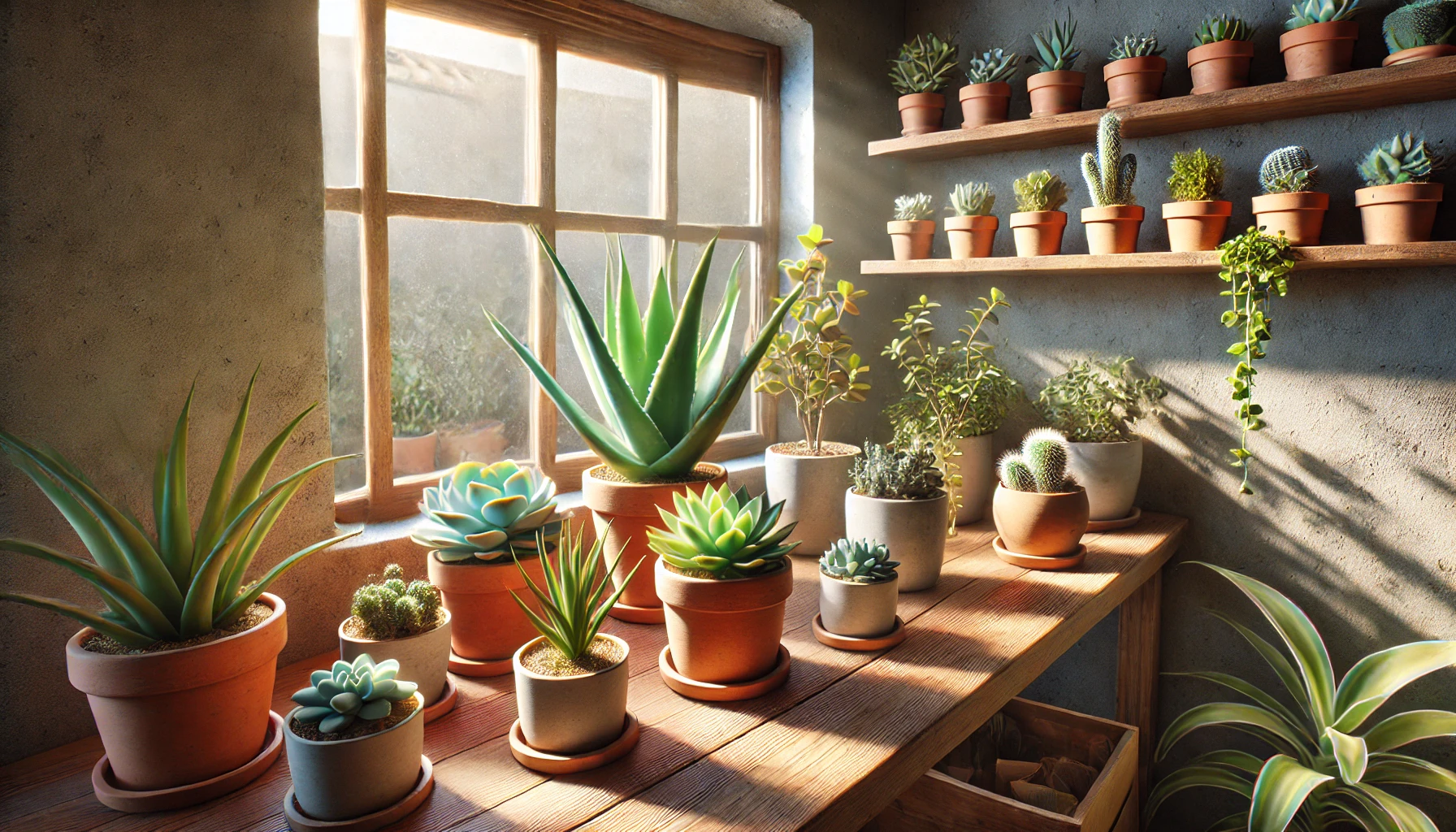Succulents are some of the most popular houseplants around — and for good reason. They’re compact, stylish, and often labeled as “impossible to kill.” But let’s be honest: if you’ve ever watched a succulent slowly shrivel or rot away, you know that’s not entirely true.
The truth is, succulents have unique needs, especially when grown indoors. This guide will teach you how to keep your succulents healthy, happy, and thriving inside your home — no sun-drenched desert required.
Why Succulents Are Special
Succulents are a group of plants that store water in their leaves, stems, or roots. This adaptation allows them to survive in arid environments — and makes them sensitive to overwatering and poor drainage.
Common succulent varieties include:
- Aloe Vera
- Echeveria
- Haworthia
- Jade Plant (Crassula ovata)
- Zebra Plant
- String of Pearls
- Panda Plant
These plants are low-maintenance, but they aren’t no-maintenance. Let’s break down the essentials of indoor succulent care.
1. Give Them Bright, Direct Light
Succulents are sun lovers. Outdoors, they thrive under direct sunlight — and they want the same indoors.
How to provide the right light:
- Place them near a south- or west-facing window
- Rotate the pot every few days for even growth
- Supplement with a grow light if your home lacks natural light
Signs they’re not getting enough light:
- Stretching or leaning toward the light source
- Faded colors or smaller leaves
- Slow or no new growth
If you can’t provide at least 6 hours of bright light per day, they’ll struggle indoors without support.
2. Use the Right Soil (It’s a Big Deal)
Succulents need well-draining soil. Regular potting soil retains too much moisture and can cause root rot.
Best options:
- Buy a pre-mixed cactus and succulent soil
- Or make your own: mix 2 parts potting soil, 1 part coarse sand, 1 part perlite or pumice
The goal is fast drainage and good airflow around the roots.
3. Choose the Right Pot
Not all pots are created equal — especially when it comes to succulents.
What to look for:
- Drainage holes: absolutely essential
- Terracotta or clay pots: absorb excess moisture and allow air to circulate
- Avoid glass or ceramic pots without drainage unless used as decorative outer covers
If your succulent sits in soggy soil, it won’t last long. Good drainage is your #1 defense against root rot.
4. Water the Right Way (Less Is More)
This is where most succulent owners go wrong. Overwatering is the leading cause of death for succulents.
Watering tips:
- Let the soil dry out completely between waterings
- Water deeply — until water drains from the bottom — then wait
- Reduce watering in winter (they go dormant and need less)
Warning signs of overwatering:
- Mushy, transparent leaves
- Black spots on the stem or base
- Leaves falling off with a gentle touch
Signs of underwatering:
- Wrinkled or shriveled leaves
- Leaf drop from the bottom up
It’s better to underwater than to overwater a succulent.
5. Don’t Mist — It’s Not a Tropical Plant
Unlike ferns or calatheas, succulents don’t need misting. Their thick leaves are designed to hold water.
Misting can actually cause mold, rot, or attract pests, especially if water gets trapped between tightly packed leaves.
Instead: Water at the base of the plant and avoid wetting the foliage.
6. Mind the Temperature and Airflow
Succulents prefer:
- Temperatures between 60–80°F (15–27°C)
- Good air circulation
- Low humidity
Avoid placing them near heaters, AC vents, or in overly humid rooms like steamy bathrooms.
If it’s too cold or too wet, succulents can become soft and discolored. Fresh air (even from an open window) is good for them!
7. Feed Them Sparingly
Succulents aren’t heavy feeders, but they can benefit from occasional nutrition.
Fertilizing tips:
- Use a diluted cactus fertilizer or balanced houseplant fertilizer
- Feed once per month during spring and summer
- Don’t fertilize in winter
Over-fertilizing leads to weak, leggy growth and can harm roots — less is more here, too.
8. Watch for Pests
Succulents can attract:
- Mealybugs: white, cotton-like insects on leaves and stems
- Aphids: tiny green or black bugs
- Fungus gnats: if soil stays too wet
What to do:
- Remove bugs manually or with a Q-tip dipped in alcohol
- Let soil dry thoroughly
- Use neem oil or insecticidal soap if needed
Healthy plants are less likely to suffer infestations.
9. Propagate and Multiply!
Succulents are incredibly easy to propagate — making them perfect for expanding your collection or gifting to friends.
Basic propagation methods:
- Leaf cuttings (place a healthy leaf on dry soil and wait for roots)
- Offsets (tiny baby plants at the base — gently remove and replant)
- Stem cuttings (let cut ends dry for a day or two, then plant in dry soil)
Be patient — it can take a few weeks to see roots and new growth.
Final Thoughts: It’s All About Balance
Succulents are not hard to care for — they just have specific needs. With the right balance of light, soil, pot, and water, you’ll have a resilient and beautiful indoor plant that brings joy for years.
Treat them less like fussy houseplants and more like desert survivors — and they’ll reward you with compact growth, interesting textures, and striking colors.
Keep it simple, keep it dry (but not too dry), and let your succulents shine.
